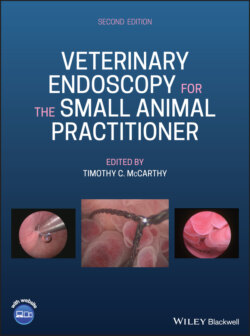Читать книгу Veterinary Endoscopy for the Small Animal Practitioner - Группа авторов - Страница 25
2.2.5 Documentation Equipment
ОглавлениеDocumentation is not required when performing diagnostic and operative endoscopy. Having the ability to capture still images is beneficial as a practice‐building tool for demonstrating to clients, pathology that is seen and procedures that are performed. Documentation is also needed for presentations and publications on endoscopic techniques and procedures.
Capture devices are available as separate modules (Figures 1.10 and 2.2) and as integral systems built into camera control boxes (Figures 2.1, 2.3, and 2.6). They are incorporated into the video system tower with all their needed wire connections, so they are ready whenever the system is used. Video still image printers and video cassette recorders were used in the early days of video endoscopy but have been replaced with digital capture devices. Video and still images are captured directly off the camera during procedures. The captured images are transferred to a computer for editing, stored on disks or thumb drives, used for computer presentations, or printed for distribution to clients and referring veterinarians. The highest quality still images are obtained with digital capture systems. Capture of video during procedures is an optional method of documentation but short video clips are recommended as opposed to recording whole procedures. Recording entire procedures uses massive amounts of storage space and requires extensive editing to provide an acceptable end product. Most capture devices can be set to a predetermined video recording time.
